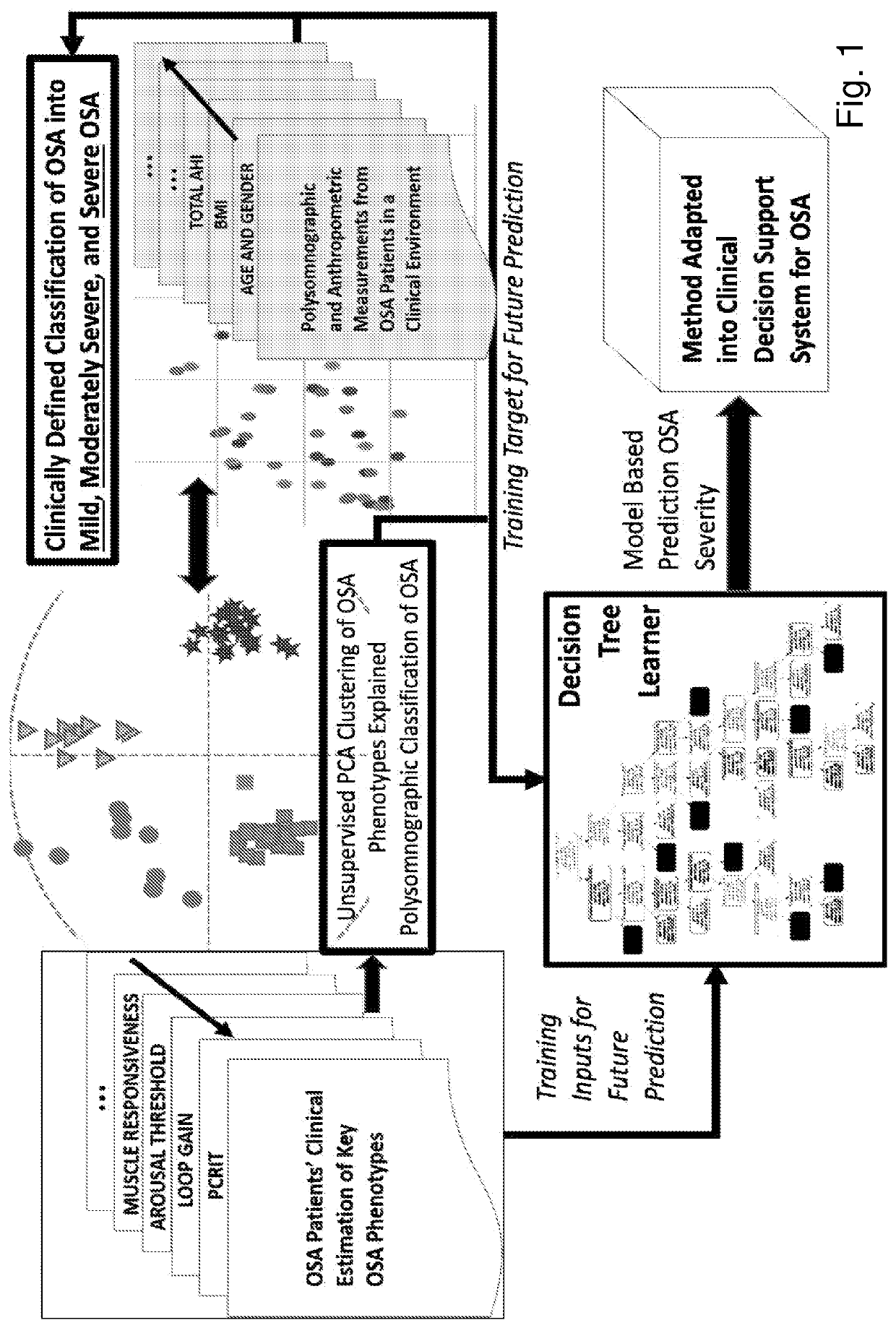Methods for Estimating Key Phenotypic Traits for Obstructive Sleep Apnea and Simplified Clinical Tools to Direct Targeted Therapy
a technology of osa phenotypes and clinical tools, applied in probabilistic networks, instruments, dynamic trees, etc., can solve the problems of high failure rate, invasive and time-consuming gold standard methodology used to quantity osa phenotypes, and inability to meet the needs of routine clinical car
- Summary
- Abstract
- Description
- Claims
- Application Information
AI Technical Summary
Benefits of technology
Problems solved by technology
Method used
Image
Examples
Embodiment Construction
[0061]The embodiments are directed at determining the extent to which standard polysomnographic and anthropometric variables can be used to accurately estimate key OSA phenotypes / endotypes including: 1) upper-airway collapsibility (Pcrit), 2) arousal threshold, 3) loop gain and 4) pharyngeal muscle responsiveness. The four pathophysiogical phenotypes / endotypes, namely, Pcrit, Arousal threshold, Loop gain, and Muscle responsiveness have recently been identified as contributors to OSA pathogenesis and may provide new targets for therapy.
[0062]The PALM scale categorizes patients into three levels of OSA severities based on the level of anatomical compromise determined via Pcrit, namely, GOOD (Pcrit 2O), MODERATE (Pcrit between −2 and +2 cmH2O) and BAD (Pcrit >+2cmH2O).
[0063]The embodiments proceed by collection of age, BMI plus standard polysomnography parameters from a diagnostic study (without CPAP). The 4 key OSA phenotypes were quantified in a cohort of over 50 people with and with...
PUM
 Login to View More
Login to View More Abstract
Description
Claims
Application Information
 Login to View More
Login to View More - R&D
- Intellectual Property
- Life Sciences
- Materials
- Tech Scout
- Unparalleled Data Quality
- Higher Quality Content
- 60% Fewer Hallucinations
Browse by: Latest US Patents, China's latest patents, Technical Efficacy Thesaurus, Application Domain, Technology Topic, Popular Technical Reports.
© 2025 PatSnap. All rights reserved.Legal|Privacy policy|Modern Slavery Act Transparency Statement|Sitemap|About US| Contact US: help@patsnap.com



